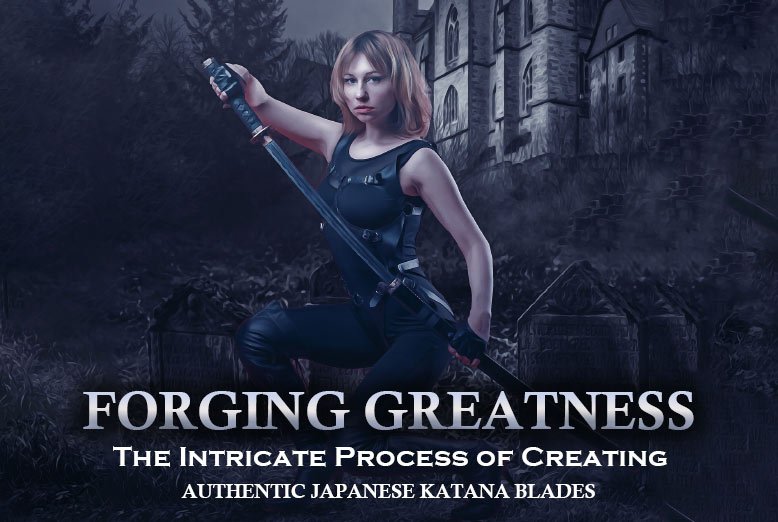The Japanese katana is a legendary weapon that has captured the imagination of martial artists, historians, and enthusiasts worldwide. Renowned for its sharpness, durability, and exquisite craftsmanship, the authentic Japanese katana is a result of a meticulous and intricate forging process that has been perfected over centuries. In this article, we delve into the fascinating journey of creating these masterpieces and explore the artistry and skill required to forge greatness.
Historical Significance of the Katana
The katana holds a special place in Japanese history and culture. Dating back to the samurai era, these swords were not just weapons; they were revered symbols of honor, discipline, and craftsmanship. The art of crafting katana blades has been passed down through generations, with each sword carrying a legacy of tradition and skill.
Selection of Materials
The first step in forging a Japanese katana is the careful selection of materials. Traditional katana blades are typically made from tamahagane, a type of high-carbon steel produced from iron sand. The process of smelting tamahagane is a delicate art, involving precise temperature control and careful handling of the raw materials.
Smelting and Folding
Once the tamahagane is obtained, the smelting and folding process begins. The steel is repeatedly heated and hammered to remove impurities and ensure a uniform composition. This folding technique not only refines the steel but also creates a distinctive grain pattern known as the hada, which adds to the aesthetic appeal of the finished blade.
Creating the Billet
After the folding process, the tamahagane is shaped into a rectangular billet. The swordsmith carefully considers the desired length, thickness, and curvature of the blade at this stage. The billet is then heated and hammered further to achieve the basic shape of the katana.
Claying and Quenching
One of the most critical steps in the katana forging process is claying and quenching. The blade is coated with a https://www.truekatana.com/catalog/japanese-samurai-swords/katana clay mixture that varies in thickness, with a thicker layer on the spine and a thinner layer on the cutting edge. This asymmetrical application creates differential hardening during quenching.
The quenching process involves heating the blade to a critical temperature and then rapidly cooling it by immersion in water. This sudden cooling hardens the edge while leaving the spine relatively softer. The result is a blade with a razor-sharp edge that is also flexible and resilient.
Tempering and Polishing
Following the quenching process, the katana undergoes tempering to relieve internal stresses and enhance its toughness. The sword is heated to a specific temperature and then gradually cooled. This careful balance of hardness and flexibility is crucial for the katana’s performance in combat.
After tempering, the blade goes through an extensive polishing process. Skilled craftsmen use various polishing stones to refine the surface and reveal the hamon, the distinctive line that separates the hardened edge from the softer spine. The polishing not only enhances the visual appeal but also ensures a smooth and flawless finish.
Mounting and Fittings
The creation of a katana goes beyond the blade itself. The hilt, guard, and scabbard are meticulously crafted to complement the excellence of the blade. The mounting process involves the assembly of these components, with attention to detail given to the aesthetic balance and functionality of the entire sword.
Conclusion
The forging of an authentic Japanese katana is a laborious and intricate process that demands the highest level of skill and craftsmanship. From the careful selection of materials to the final assembly, each step is a testament to the rich history and cultural significance of these legendary blades. The result is not just a weapon but a work of art that embodies the spirit of the samurai and continues to captivate enthusiasts around the world.
ALSO READ: Top 12 E-commerce Companies that blew up all the charts of the Indian market















